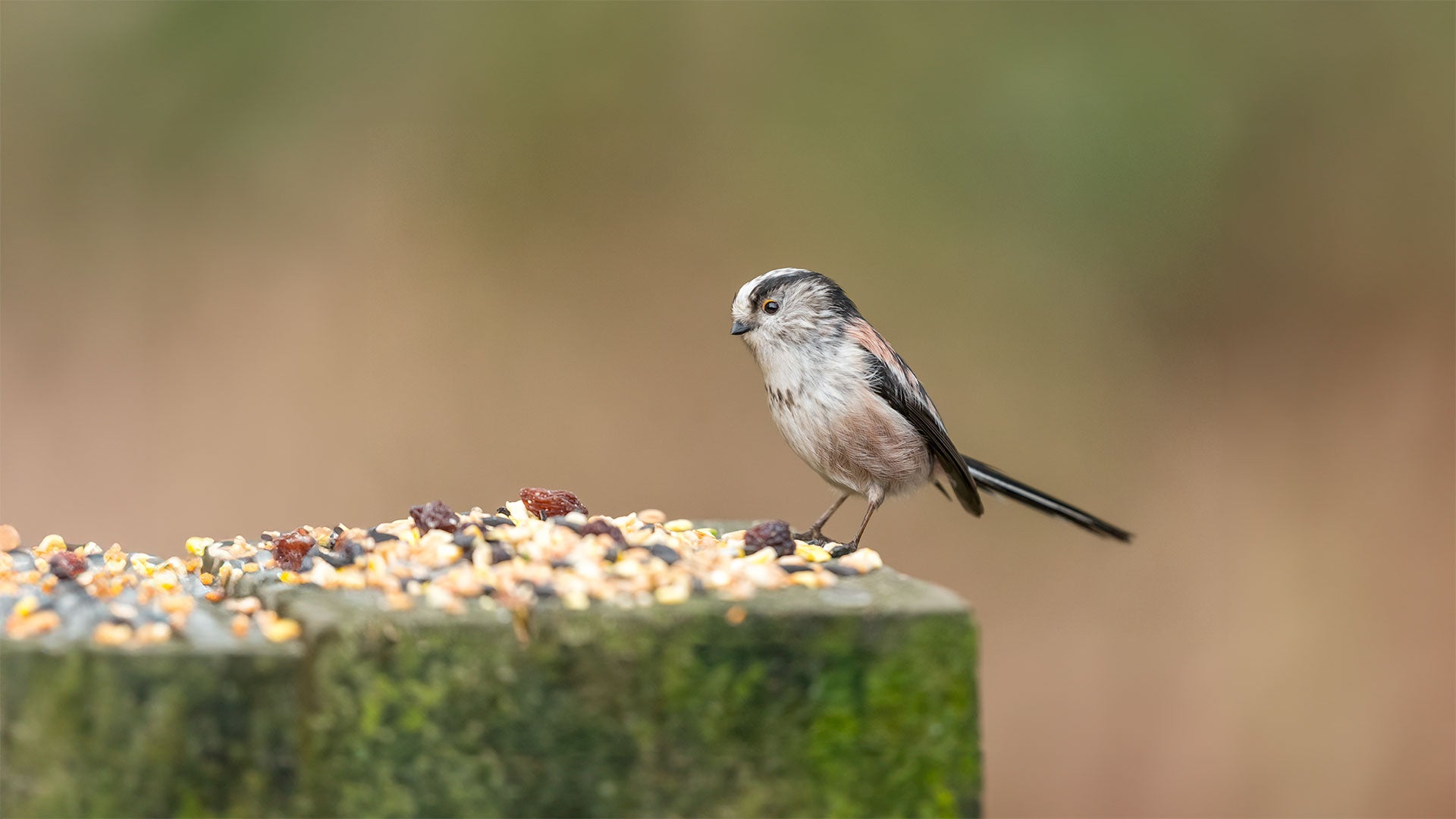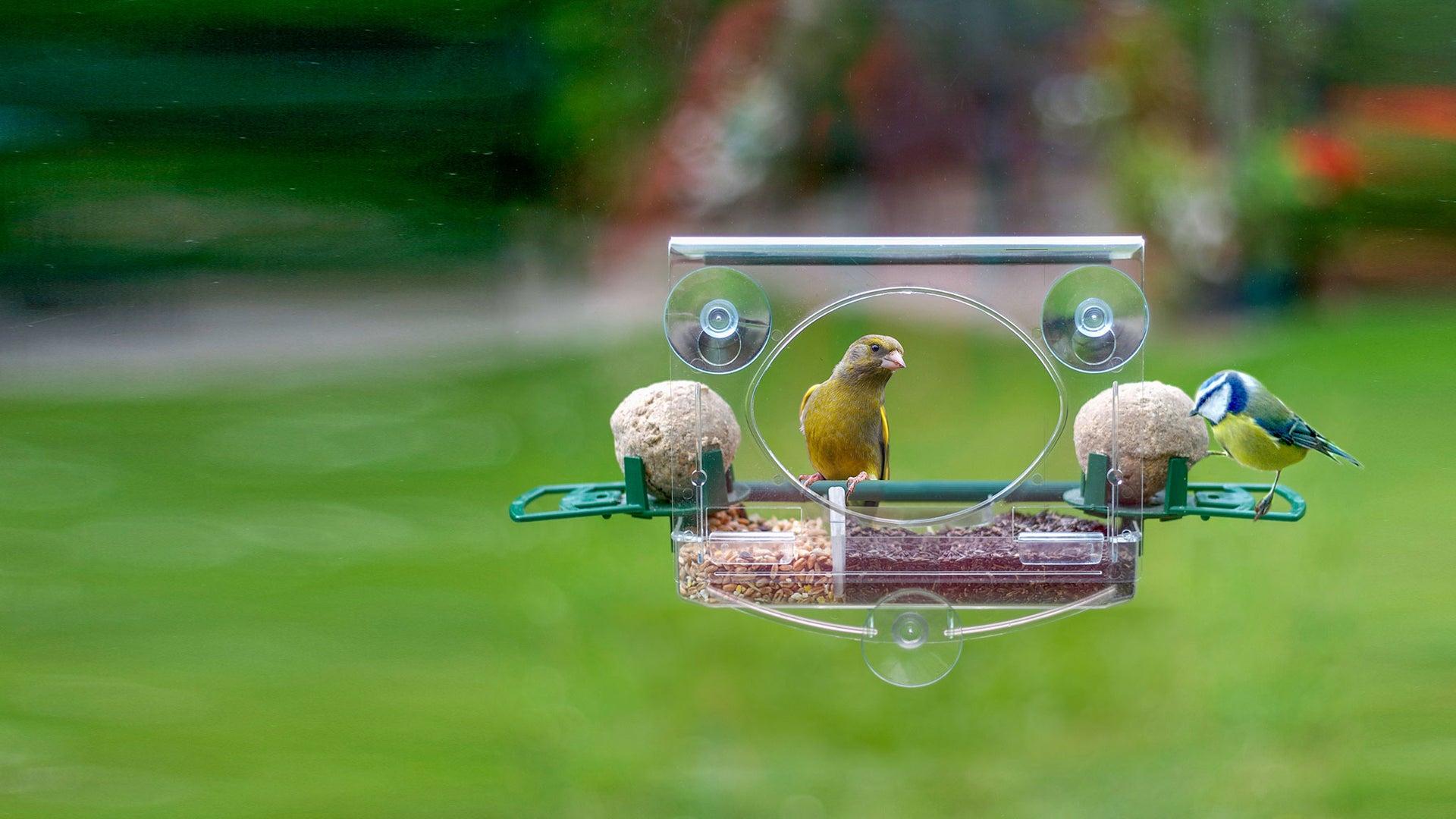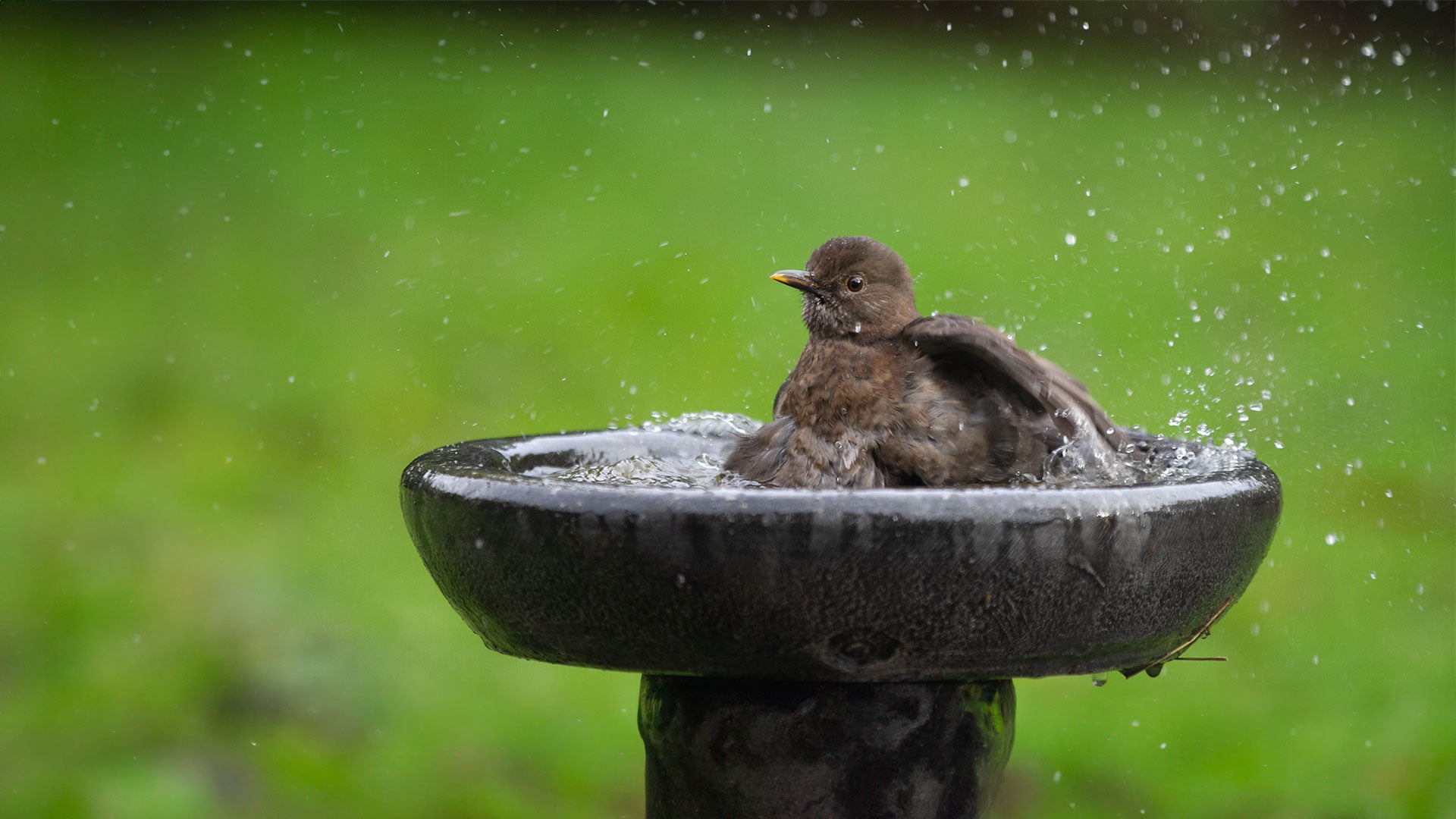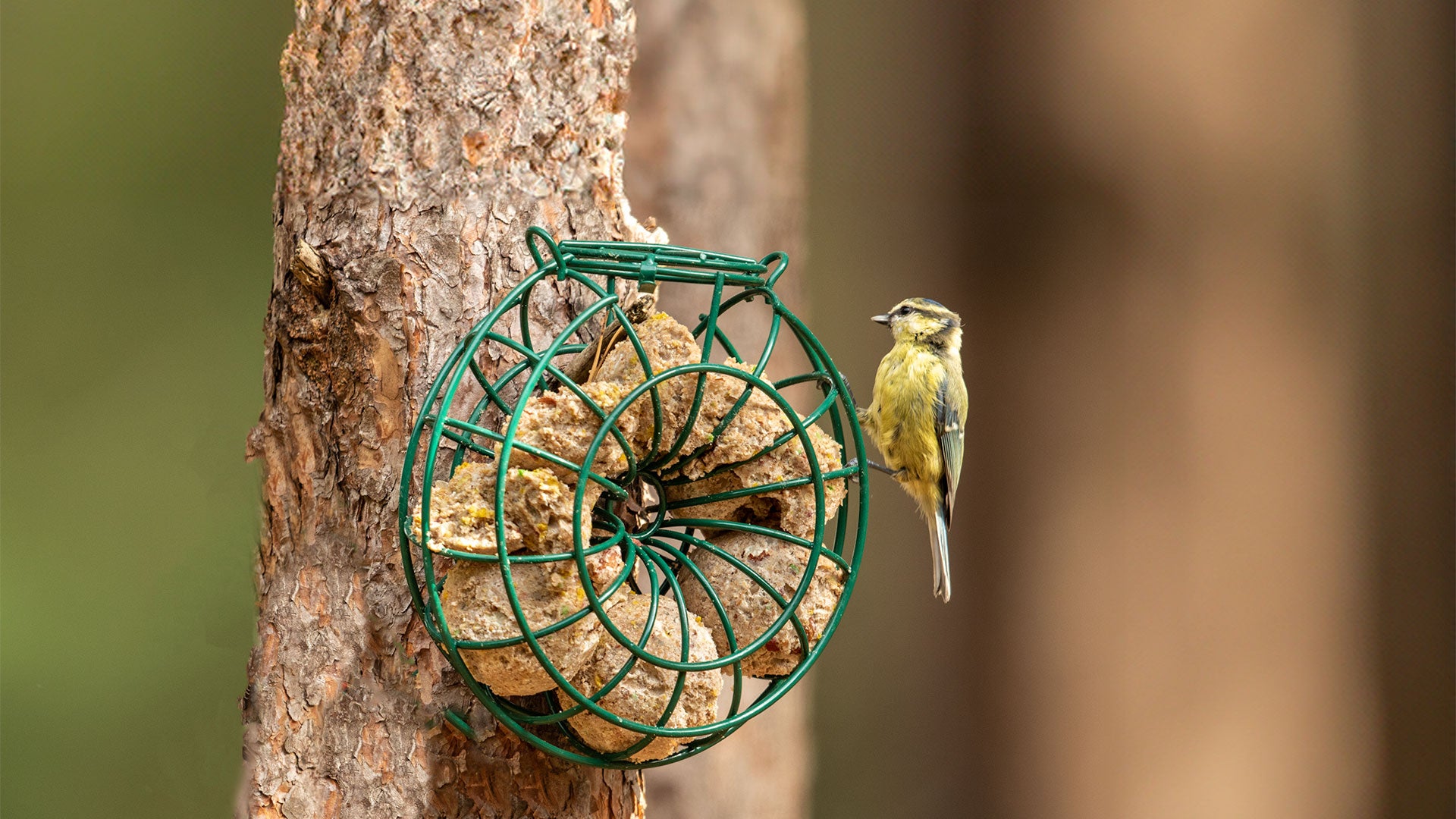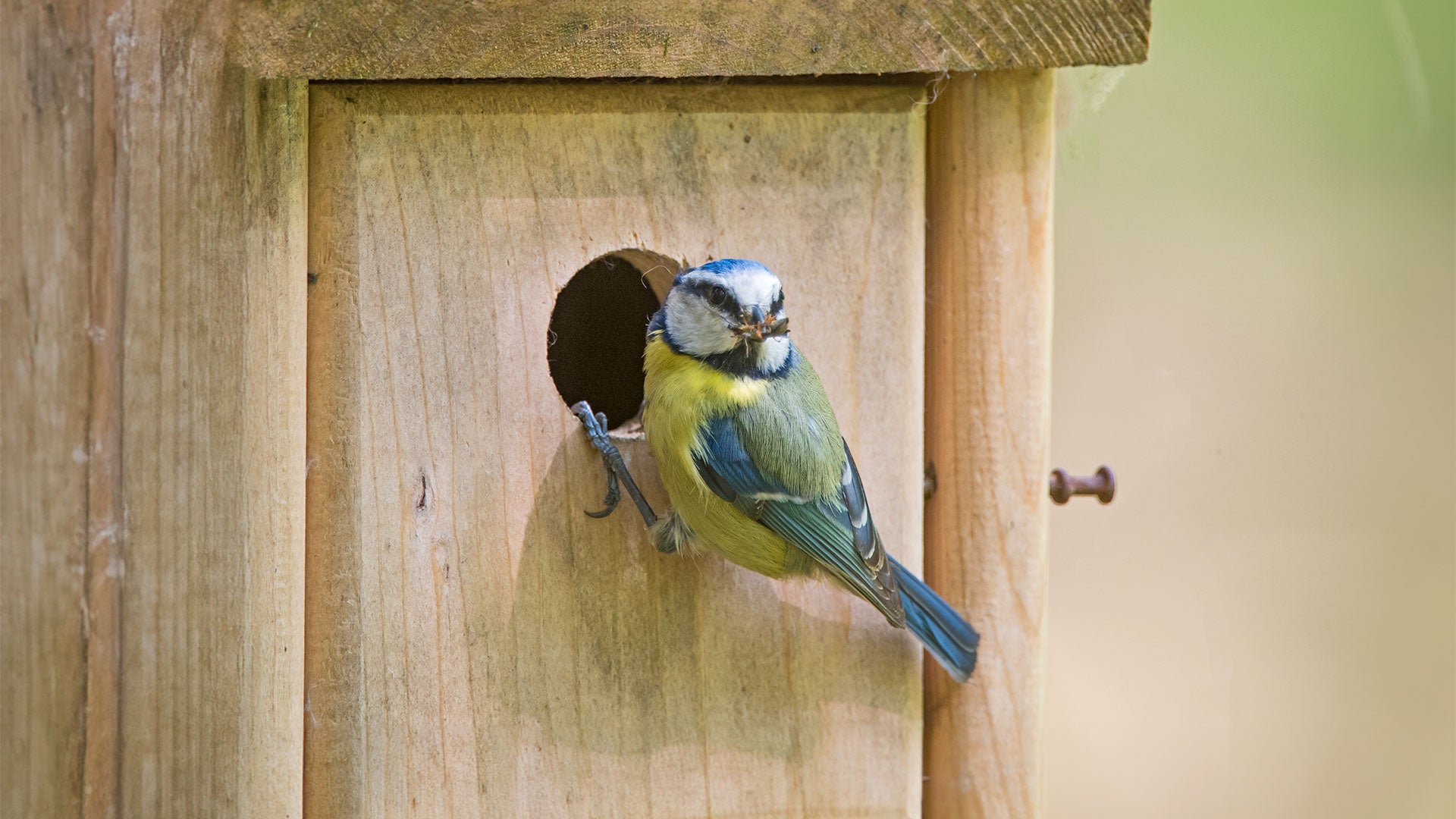The pied wagtail has a black crown, nape, chin and throat. The forehead and rest of the head is white, the mantle and scapulars are black and the underparts are white.
Pied wagtail identification
Length: 18cm.
Their flight feathers are greyish-black with white edges. They have a black bill and legs. The youngsters’ upper parts are brown-grey and the underparts are yellowish-white with greyer flanks and greyish throat. Their wing-feathers are edged with buff.
The pied wagtail is sociable and spends the night in communal roosts. It will often follow cattle and not infrequently perches on the backs of domestic stock.
What does a wagtail look like?
There are three types of wagtail commonly sighted in the UK. These are:
The grey wagtail, which has a grey upper body and a distinctive lemon yellow under-tail which is noticeably longer than other types of wagtails
The yellow wagtail, which is a distinctive yellow and green colour, with a medium-length tail and slender black legs
The pied wagtail, which is a long-tailed black and white bird. Their feathers can also be grey or cream in colour, and juvenile pied wagtails may have yellow colouring
Pied wagtail call - What does a pied wagtail look like?
It has a distinctive high-pitched ‘tschissik’ or ‘tschissip’ and, also a ‘ tschik’. Their song is a combination of repeated twittering call-notes uttered both in flight and when perched.
Where and when do Pied wagtails nest?
These birds nest from mid-April onwards, preferring to nest in holes or crevices in buildings, rocks, cliffs, trees etc. They will also nest on the ground and in old, abandoned nests. The nest consists of a mixture of dry grasses, lined with horsehair, wool and feathers. The female builds the nest alone.
Five or six, greyish to blue-white, eggs are laid. These are often speckled and streaked brownish and grey. The female incubates for a period of 12 to 14 days. They young are tended by both parents and leave the nest after 14 to 15 days. There are usually two or three broods in southerly areas and normally one in the northern regions.
Pied wagtail nesting habits
The pied wagtail likes farms, gardens, tundra, open country and inhabited areas, being as resourceful as they need to be. They can set up home right alongside people: under roofs, in walls and even in ivy hanging from houses. In winter, they are found more often on farmland.
Wherever they end up nesting, pied wagtails will often vigorously defend their territories, protecting nests in the spring and summer, and defending feeding grounds when food is scarce during the winter.
What do wagtails eat in the wild?
In the wild in the UK, pied wagtails primarily feed on small invertebrates. Their diet includes insects such as flies, beetles, moths, and caterpillars, which they often catch on the ground or by darting into the air. They are commonly seen near water sources, feeding on aquatic insects like midges.
During the colder months, when insects are scarce, they may also eat small crustaceans, spiders, and occasionally seeds or berries. Their adaptable feeding habits allow them to thrive in a variety of habitats, from riversides and wetlands to urban areas and farmland.
What to feed wagtails in the garden?
Where should you feed pied wagtails?
Feeder – Not suitable
Table – Not suitable
Ground – Scatter food in the open
Is the pied wagtail rare?
These little birds are widespread throughout western Europe and we in the UK are blessed with plentiful pied wagtails. They venture further east into Eurasia for the summer and then into Africa, the Arabian peninsula and Indian subcontinent during the winter.
Globally, the wagtails’ conservation status is ‘least concern’ and this is echoed in the UK.


